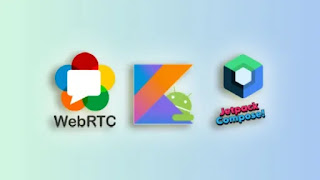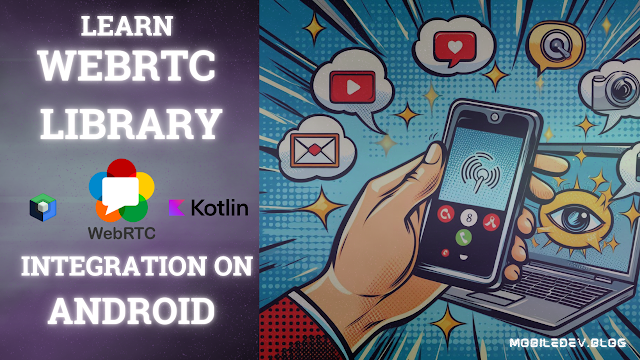WebRTC, which stands for Web Real-Time Communication , is an open-source project that enables real-time communication capabilities directly in web browsers and mobile applications. It allows audio, video, and data sharing between peers without the need for an intermediary server, making it a powerful tool for building applications that require live interactions, such as video conferencing, voice calls, and file sharing.
Why Use the WebRTC Android Library?
The WebRTC Android Library simplifies the integration of real-time communication features into your Android apps. It abstracts the complexities of the underlying WebRTC APIs, allowing developers to focus on building robust applications without getting bogged down by intricate details. With this library, you can easily implement features such as video calls, voice calls, and data sharing.
Important Note
As of August 15, 2024, jCenter has shut down, and the last official released
artifact version from the Google WebRTC team is
google-webrtc-1.0.32006. It is crucial to reference this
version in your projects to ensure compatibility and functionality.
Want to generate own WebRTC Library from scratch , check out this blog here -> https://www.mobiledev.blog/2024/11/webrtc-framework-generation-for-android.html
Getting Started with WebRTC Integration
Integrating the WebRTC Android Library into your project is a straightforward process. Follow the steps below to get started:
Step 1: Add JitPack Repository
To begin, you need to add the JitPack repository to your project. Open your
root build.gradle file and include the following in the
allprojects section or in settings.gradle:
repositories {
google()
mavenCentral()
// Add JitPack Maven repository
maven { url = URI("https://jitpack.io") }
}Step 2: Add the Dependency
Next, include the WebRTC library in your app module's
build.gradle file. Add the following line to the
dependencies section:
dependencies {
implementation("com.github.codecrunchers-x:WebRTC-Android-Library:v1.0.32006")
}Step 3: Remove Old Dependency (If Present)
If you have previously included the old dependency, you need to remove it to
avoid conflicts. Ensure that your dependencies section does not
contain the following line:
// Remove this: it will not work!!
implementation("org.webrtc:google-webrtc:1.0.32006")Using the WebRTC Android Library
With the library successfully integrated, you can start utilizing WebRTC functionalities in your Android application. The library provides a range of features, including:
- Video and Audio Communication: Implement high-quality video and audio calls between users.
- Data Channels: Enable peer-to-peer data sharing for applications like file transfer or chat.
- Screen Sharing: Allow users to share their screens during video calls.
For detailed API usage and examples, refer to the official WebRTC Android documentation.
Important Reminder
Remember to reference the last official artifact version
google-webrtc-1.0.32006 in your projects, as jCenter is no
longer available. This will help you maintain compatibility and ensure that
your application functions as intended.

Master WebRTC setup, Jetpack Compose UI design, and Android navigation to build a robust video call app for beginners.
Enroll NowConclusion
Integrating Google WebRTC into your Android application opens up a world of possibilities for real-time communication. By following the steps outlined in this guide, you can easily set up the WebRTC Android Library and start building powerful applications that leverage real-time audio, video, and data sharing capabilities.
As the digital landscape continues to evolve, staying updated with the latest technologies is essential. With WebRTC, you can ensure that your applications remain at the forefront of real-time communication, providing users with seamless and engaging experiences.
For more insights and updates on WebRTC and other technologies, stay tuned to our blog!


Post a Comment